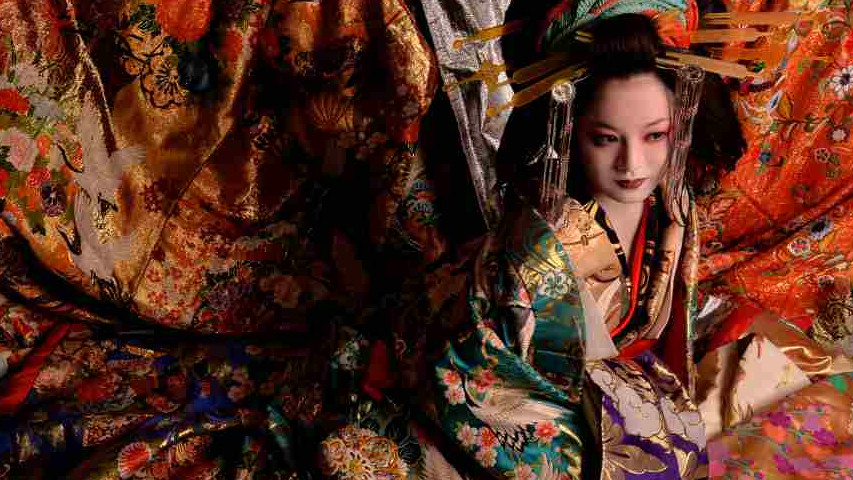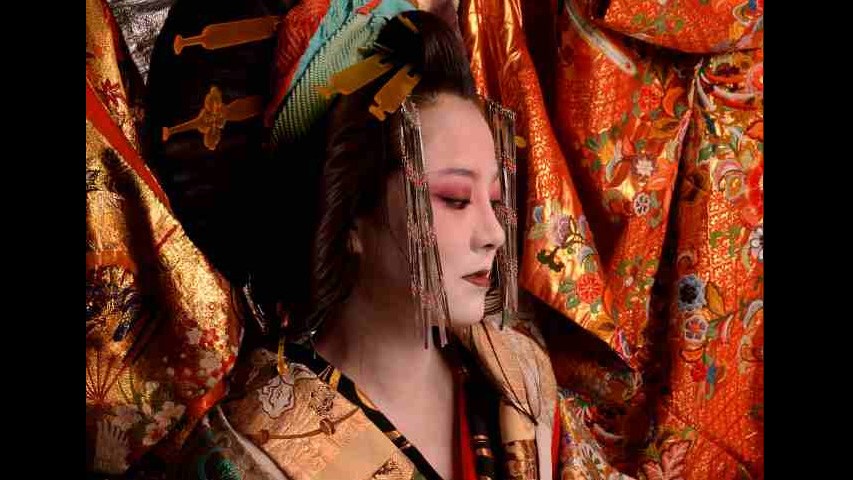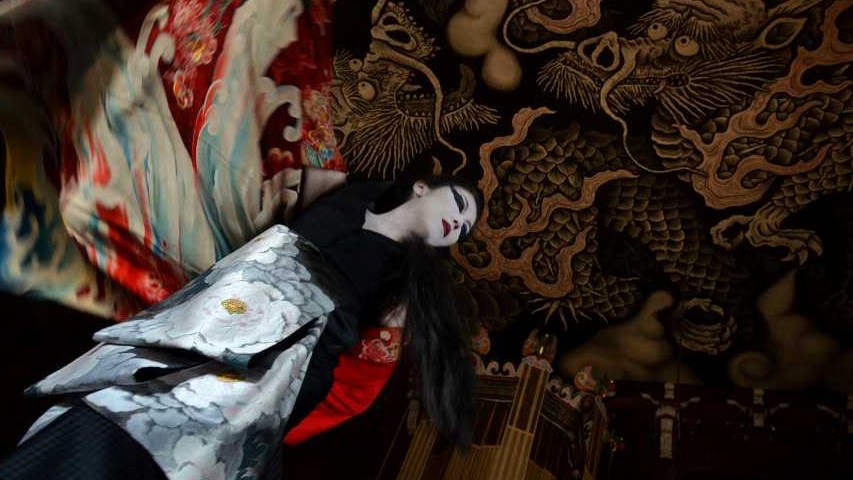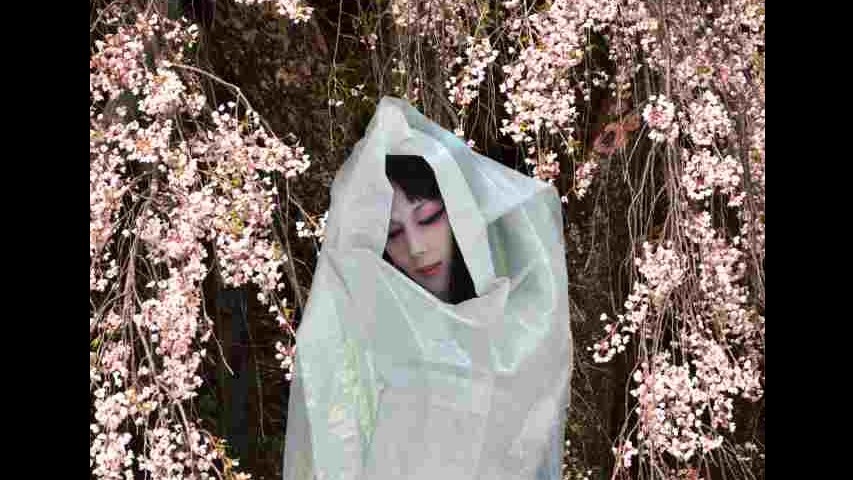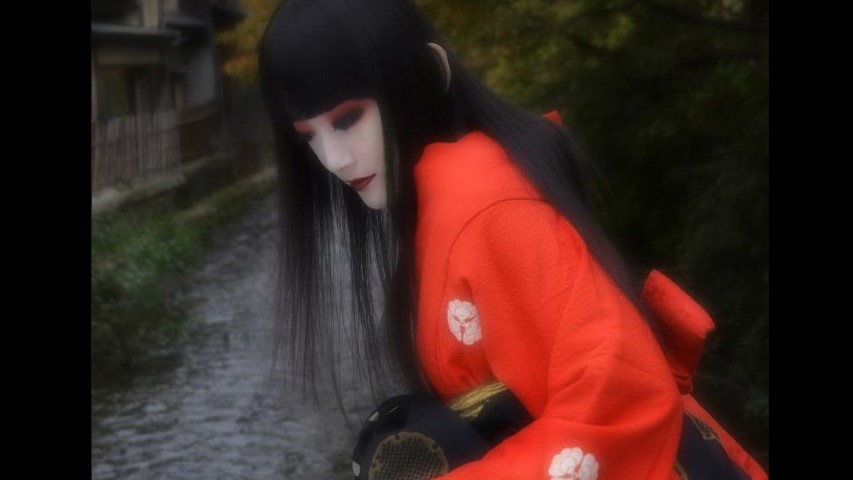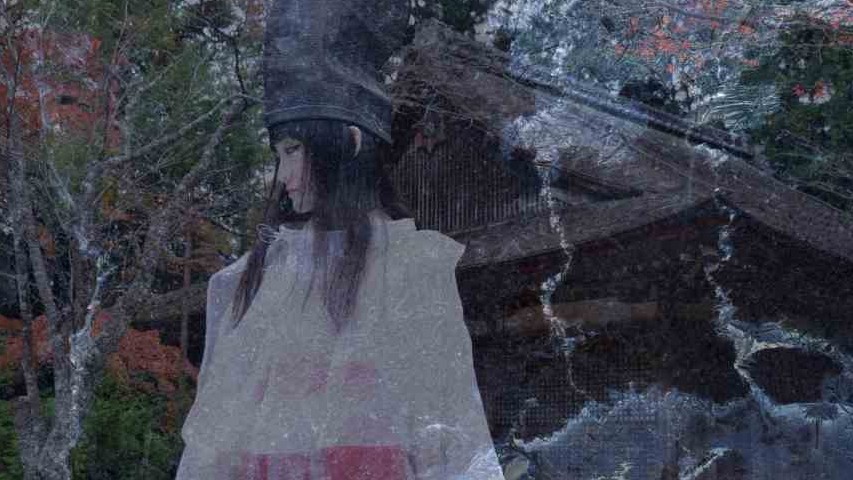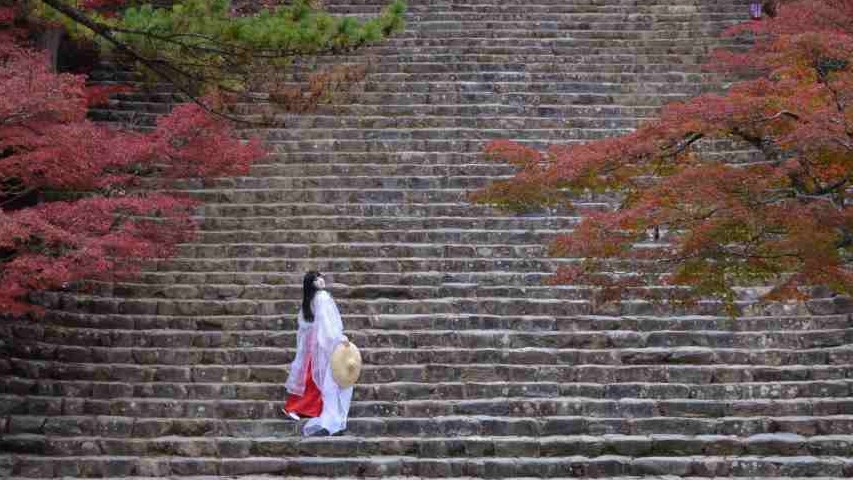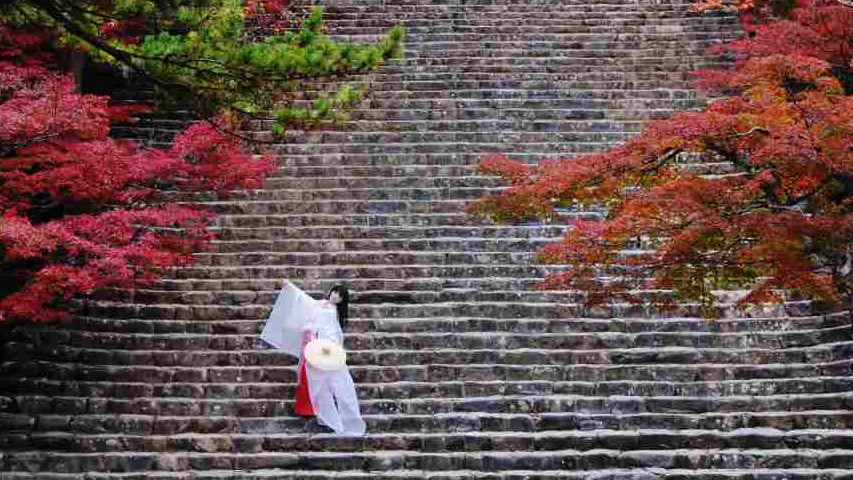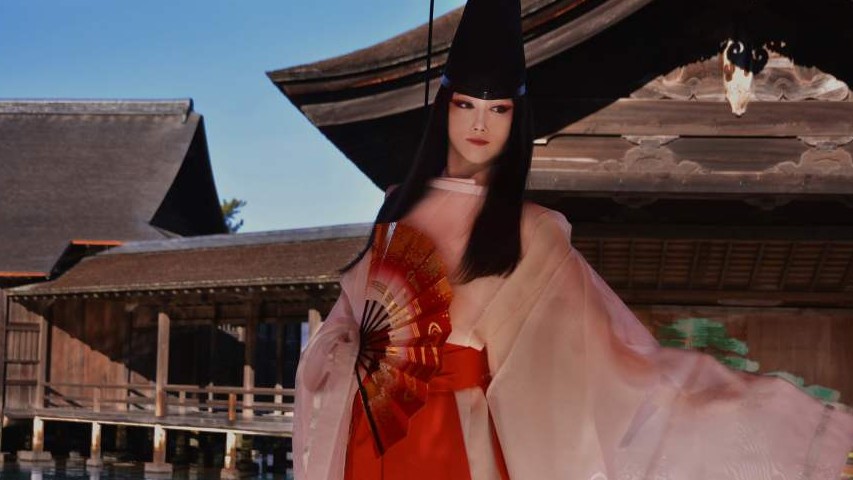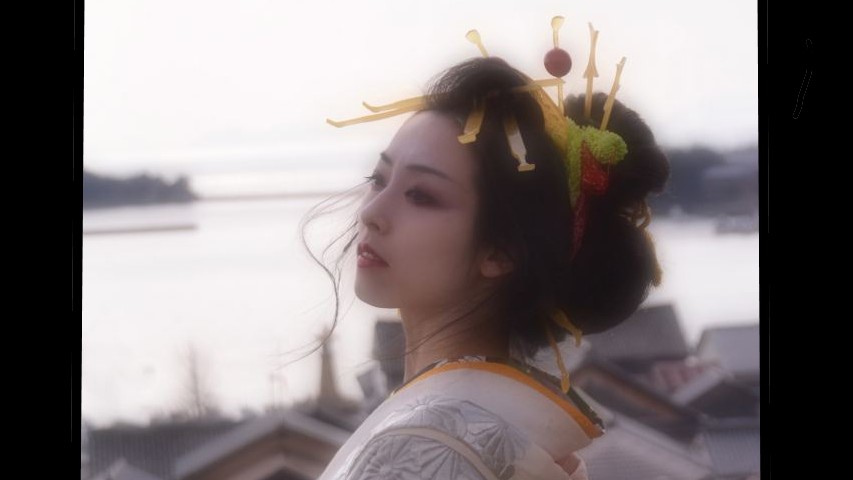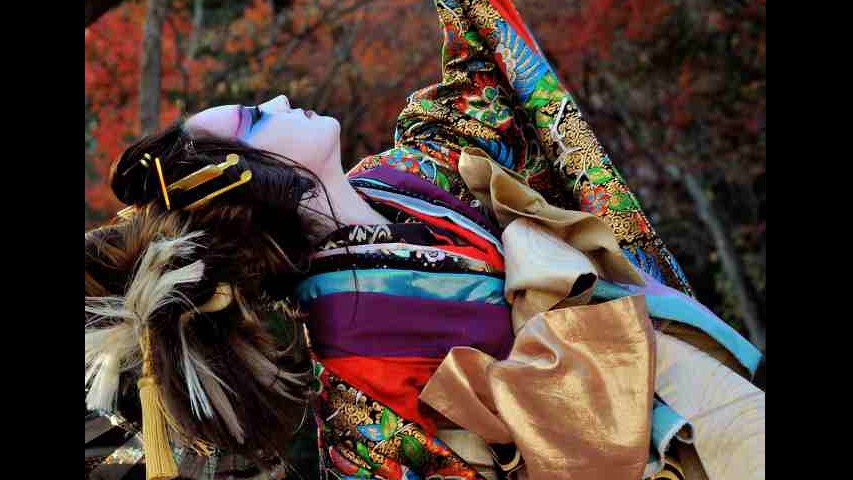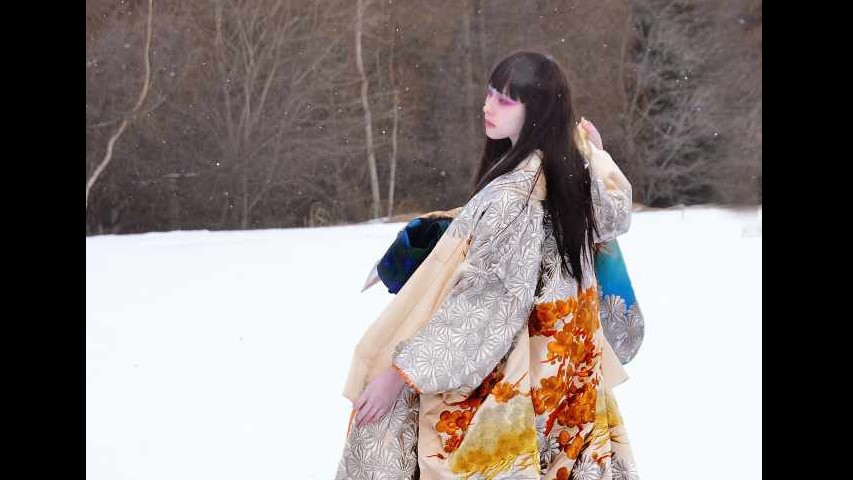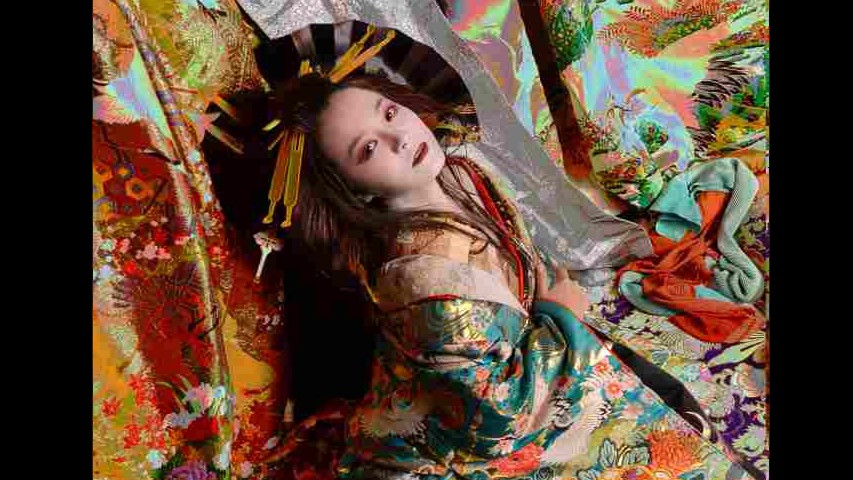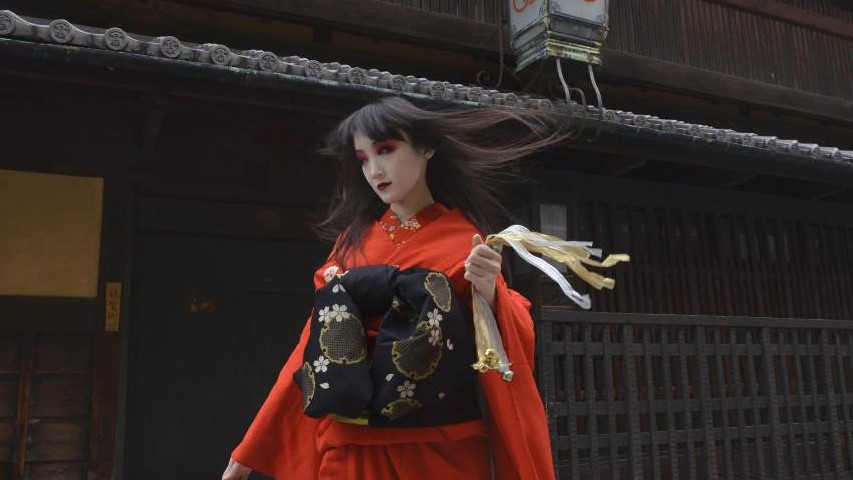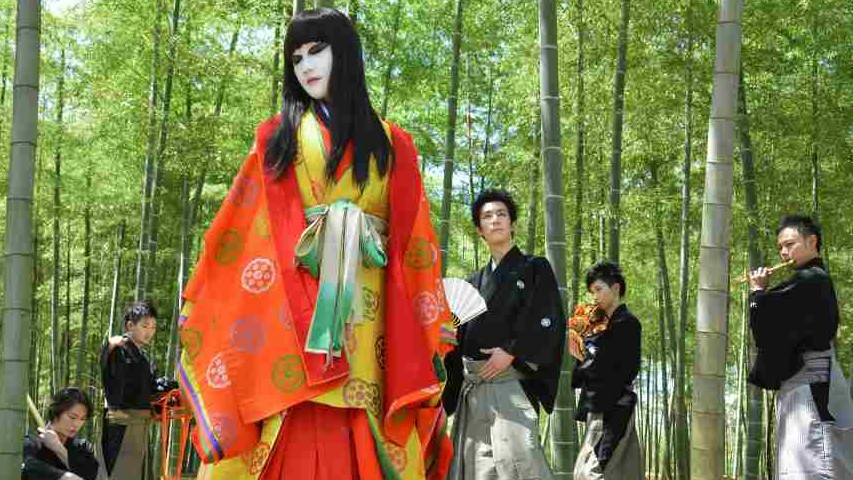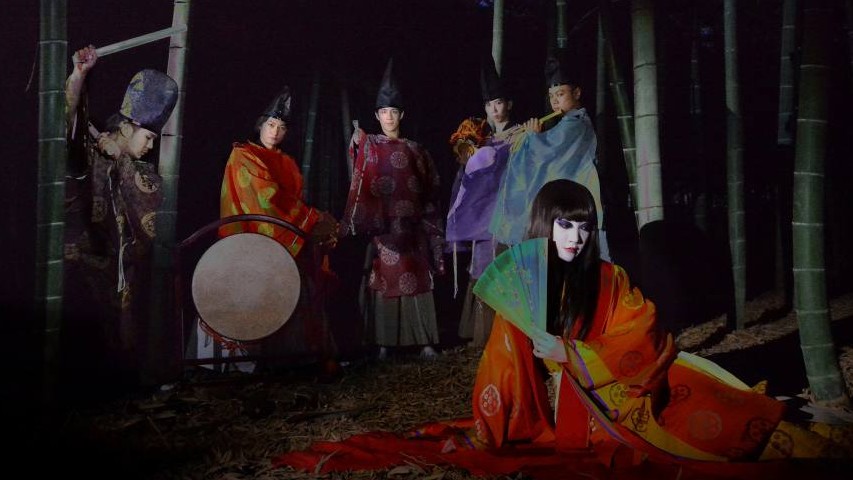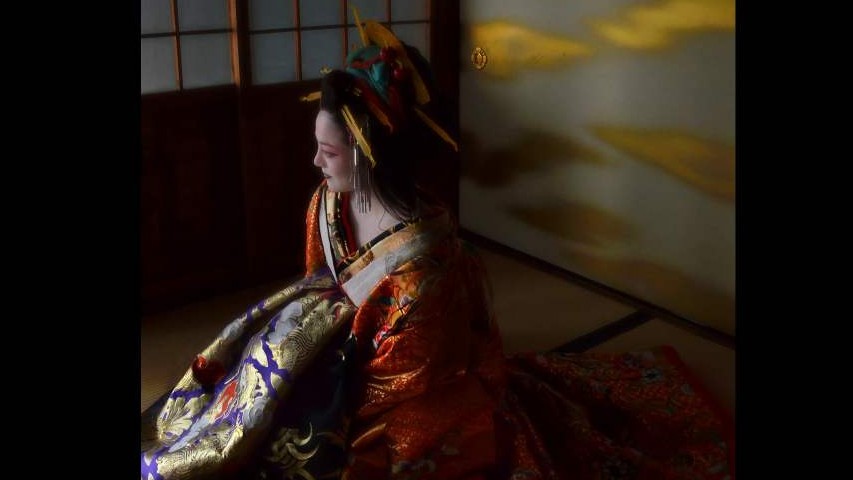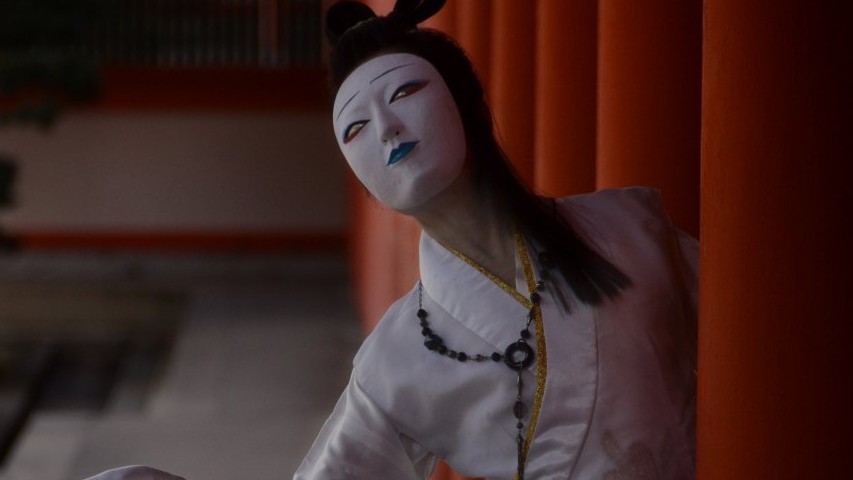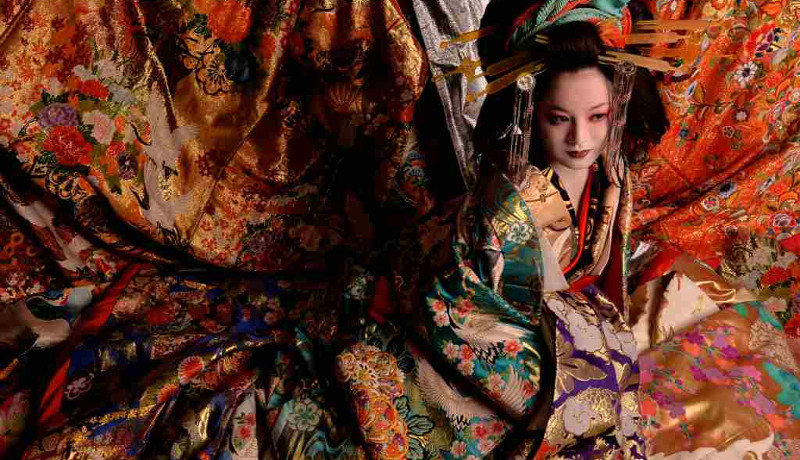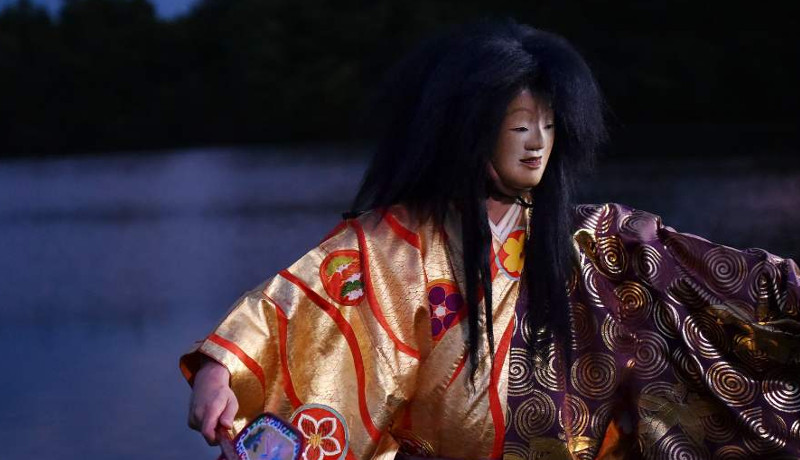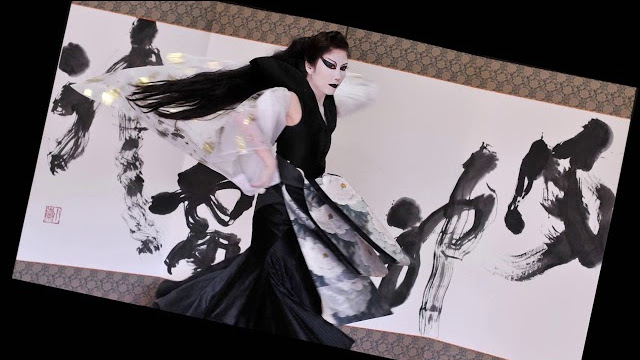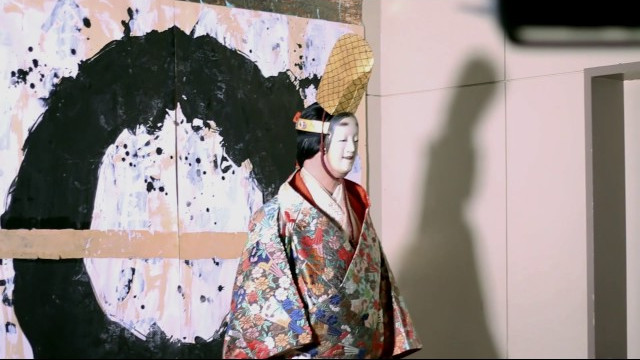Oiran
With passing of time, Shirabyoshi became either Geisha(Geiko) who specialized devotedly on the entertainment, or "Tayu" had started in the 17th century, and it came to be called "Oiran" in Edo (today's Tokyo). High intelligence and excellent arts were necessary to be an Oiran, and only the selected few could become one. In today's Japan, there still are Geishas but not Oirans. A culture of Tayu still exists at Shimabara, Kyoto, but this is only for tourism and they show their accomplishments to tourists every day.
- Date: 2011
- Location: KYOTO
Wind God
It seems as if the dancer is guiding the two malevolent gods. While a beautiful image, at the same time tremendous power is shown.
The indigenous Japanese gods of Shinto are unruly, and to tame them was the earnest wish of the ancient people.
- Date: 2011
- Location: KYOTO
Two Dragons
A dragon is a symbol of fertility that brings a welcome rain in Japan. It was tied to water probably because it resembles a winding river just like Naga in India. So dragons are often drawn on the ceilings of temples as a charm of preventing fires. It is also considered as a guardian of Buddhism at temples. (It is probably because according to a legend in India, Naga believed devoutly in Buddhism hearing Buddha's sermon.) A dragon in Japan has a whole different concept from Western dragons.
These two dragons are drawn on the ceiling of a Buddhist temple, and the model got up on a stepladder while I was photographing on the floor.
- Date: 2011
- Location:
Cocoon
This Cherry Blossom tree is over 600 years old. The large trunk is like a rock, though at the center, juvenescent life flows abundantly. A woman cocooned in silk stands as in a daze.
Is she is having the same dream as the ancient tree wrapped in time? Gold leaf applied with Japanese-style painting techniques represents the flickering of life.
- Date: 2011
- Location: NAGANO
Shirakawa
Shirakawa is a small river that flows through Gion, the red-light district in Kyoto. Japanese-style restaurants line up along the river bank, and you can have refined Kaiseki-ryori, tea-ceremony dishes. When I was on the bridge over the river, I suddenly had the idea of expressing a traditional Japanese woman here. It is my fundamental image of an old-fashioned Japanese girl. The pose with flowing black hair was decided quickly, and I took several pictures.
The concept of her costume was "Kamuro," which is worn by girls before they become Tayu, or Oiran, high-class prostitutes. She has a bell with gold and silver ribbons, and they were used to announce the coming of a Tayu in her procession. An actual bell used in the procession had five-colored strings associated with Buddhism ideas.
- Date: 2011
- Location: KYOTO
a Memory of the years
Where has the sorrow of Shirabyoshi gone? Where have her fine singing voice and her gaze gone? After the lapse of many years, how much time has passed?
Everything has disappeared over time, but Shirabyoshi's heart was stored as a fossil. I came in touch with a piece of this memory at the mountain temple. I saw an illusion of a Shirabyoshi through the model.
Shirabyoshi is a wandering artist and prostitute in the 12th century. It was the time of wars and bloodshed in Japan then, so there were a lot of Shirabyoshis from noble families. They were often tossed around by men and their struggles for power, and some who had generals as their lovers suffered hard fate with them. They were girls dressed like men wearing hunting suits, Takaeboshis which were headgears worn by court nobles, and sometimes they carried long swords. They were said to have sung beautifully and danced elegantly.
- Date: 2011
- Location: KYOTO
Morning has not come yet -Autumn-
There was a "Shirabyoshi(medieval Japanese dancer)" who had to set off on a journey early in the morning. When would she be able to come back to this capital?
Looking over her shoulder, precincts of a temple with tinted autumn leaves was quietly watching over her. Shirabyoshi danced her last dance and said goodbye to the temple that had supported her throughout her difficult and painful times.
- Date: 2011
- Location: KYOTO
Itsukushima shrine
Itsukushima Shrine in Hiroshima Prefecture is a rare shrine that was built as if it were floating on the sea. It is said that Taira No Kiyomori re-erected the shrine in the 12th century. Taira No Kiyomori was a general in medieval Japan whose power and prosperity were unequaled. He had a beautiful Shirabyoshi named Gioh as his concubine but one day a young shirabyoshi named Hotoke came to visit him. Taira No Kiyomori tried to send her away without seeing her, but Gioh felt sorry gor her for she was a Shirabyoshi just like herself. She asked Taira No Kiyomori to see her. Taira No Kiyomori was attracted by a young Hotoke and made her his new concubine. And he sent Gioh away.
However, Hotoke did not forget Gioh's kindness. She felt deep sadness in being tossed around by powerful men, so she left Taira No Kiyomori and visited Gioh who had secluded herself from the world at a temple in a mountain. She had stayed there until she died. That is Gioh Temple in Kyoto.
- Date: 2014
- Location: HIROSHIMA
At a Hill Overlooking a Harbor
On a fine and windy day, she climbs the hill overlooking the harbor and waits for her beloved husband who is a foreigner to come back from a foreign country. However, the wind blowing in emptiness brings her a sad pressentiment. She cannot suppress her throbbing heart being tormented by the idea of him never coming back to her.
After the Edo era, when the Meiji era (1868~) was about to start, national isolation ended and envoys seeking trade began to arrive in Japan. By national demands, there were some Japanese women partly forced to become wives of men already married to women in their own countries. Many of them did not have such happy lives.
- Date: 2014
- Location: HIROSHIMA
Leaves aflame
I took this photograph at an abandoned temple in Kyoto in autumn. In reality, an Oiran might not have danced in autumn with beautiful leaves surrounding her.
However, I really wanted to see this scene. In a few minutes before the sunset, oblique lights revealed everything beautifully.
- Date: 2011
- Location: KYOTO
Clarity
Mountain districs in the central part of Japan get covered with snow in winter. I was there to photograph a work named "Yukionna,(Snow queen)" but it was not snowing then. the model was not only an actress but a dancer of traditional Japanese dance. She strated to dance voluntarily when she got on the snow field. I had never seen such a beautiful dance before.
- Date: 2012
- Location: NAGANO
The moon of a million
A top Oiran in Yoshiwara in Edo was about to get to the zenith of her time. However, wasn't this beaming glory very distorted and wasn't it only allowed inside the theme park of the closed red-lighted district? She could not control her agitated mind among the overflowing colors.
Tayus in Kyoto were conservaitive and they had to follow very strict traditions of hairstyles and the ways to dress in Kimonos, but Oirans in Edo enjoyed and competed with their fashion quite freely. However, they had to live inside the closed district with its own rules and they were not free to go out of the district.
- Date: 2011
- Location: KYOTO
A Kamuro Leaping Through Time
A girl is in a hurry as if she is trying to shake off her uneasiness. She is almost a woman. There is no time for her if she wants to become an Oiran.
Most of Kamuros were girls sold by their parents or were abducted, and they were imprisoned inside the pleasure quarters where they were taught manners, arts and sciences thoughtfully. Their idols were Oirans, but of all the Kamuros, only a few with excellence attainments and incomparable beauty were able to become Oirans.
- Date: 2011
- Location: KYOTO
The copyright of photos and images posted on this site belongs to Diva Unison inc. We will refuse copying of pictures and images hard.
